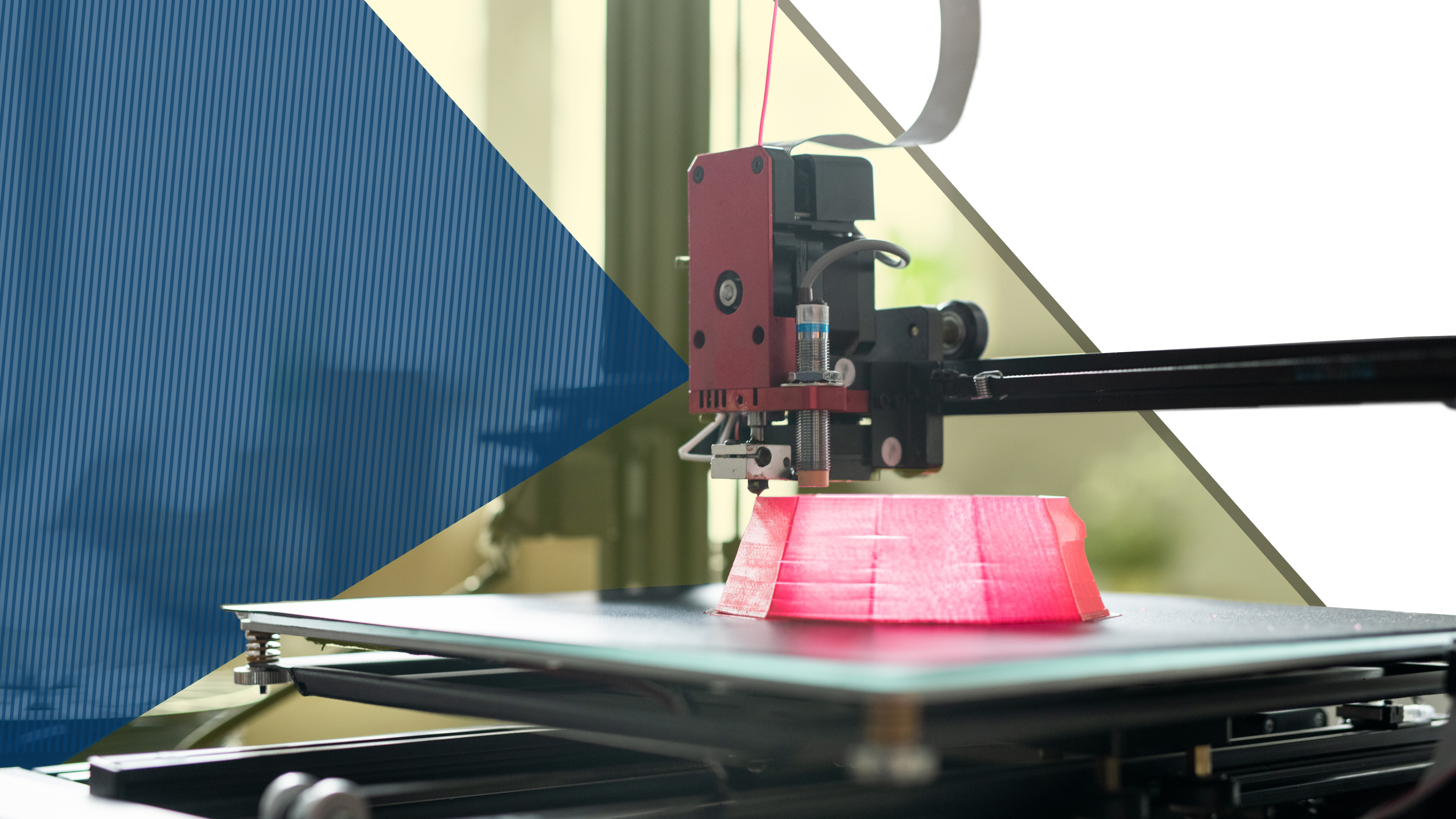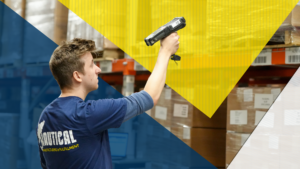Some products can’t simply be sourced–they need to be specifically designed to exact specifications to meet a unique need for your business and customers. These engineer-to-order products may be created for any number of reasons to help companies:
- Reduce costs from their existing product suppliers
- Add additional features to an existing product
- Develop a shorter time-to-market window
For these more customized projects, there is a development process that includes designing product specs, printing 3D models, and ultimately shaping the product to best meet the needs of your customers. It can be overwhelming to consider all the necessary steps involved in developing a custom product, but they are necessary before you can reach the manufacturing and fulfillment stages. Taking the correct approach to product development can save your business time and money.
In this post, we will be looking at how custom product development works, and how your business can leverage this strategy along with sourcing to expand your impact.
What are the Steps of Custom Product Development?
Before getting to a final product in a warehouse, there are several planning and development steps as your business evaluates its needs and remains iterative through the design and prototype phase.
- Defining Requirements: Here your company defines the design specifications, considering all aspects from transportation and packaging to the end user. Product needs must be communicated with supply chain partners
- Prototyping: This is a cooperative process you engage in with a custom product development company to create a prototype for your product. This prototype will serve as a proof of concept for the production process and the end result.
- Manufacture Sample: Your partner company will manufacture a sample matching your prototype as closely as possible. You’ll work together to close any gaps between the proto-design and production sample.
- Product Production: This is when you receive the final product, conduct quality control inspections and distribute products to your business partners and consumers.
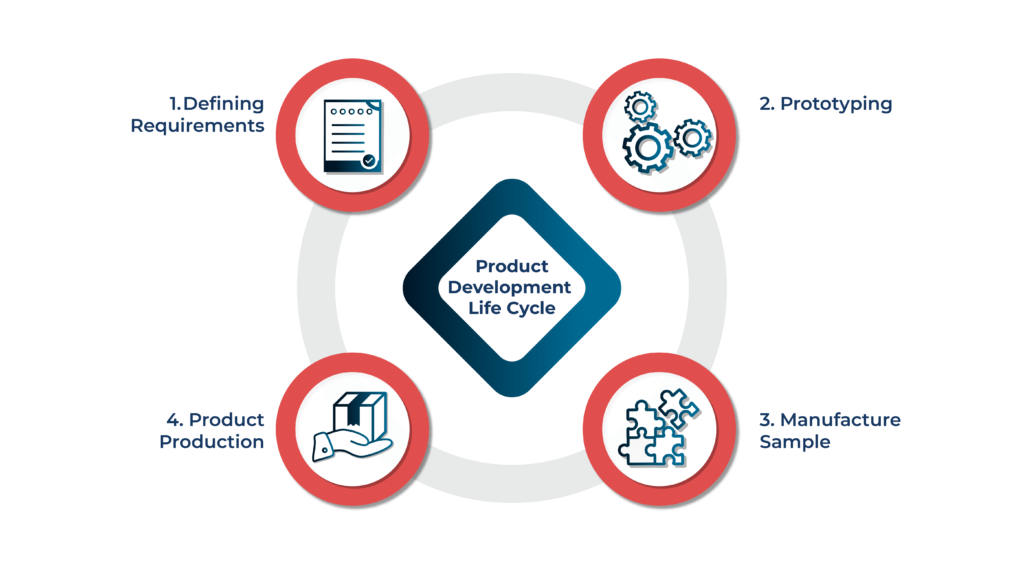
In the initial planning stages, make sure not to skip market research, as it is a critical part of fabricating relevant new products that resonate with your buyers. It’s essential to identify the needs and wants of your customers. In addition, any product solution needs to be:
- Cost-effective as your business scales
- Able to integrate with your current product lines and systems
- Easily maintainable and serviceable
How are Custom Products Produced?
There are many important considerations during the prototyping and manufacture sample phases of product development before a new product is production ready. The custom product development company you partner with will work with you each step along the way, from identifying the right raw materials to fulfillment. It’s important to partner with a company that has experience synthesizing new products so that end-to-end requirements aren’t left out, resulting in a production issue or worse–a finished product that doesn’t meet your expectations.
Sourcing of Raw Materials
The materials involved in creating your new product need to be carefully considered to make sure they align with the requirements of the finished product. For example, food-grade materials have specific regulatory requirements that must be met. Depending on the product, materials may need to be sourced from different parts of the world making the process more complicated. Raw materials selection is important to overall product development costs, as small changes can help to drive a more streamlined manufacturing process.
Setting the Manufacturing Approach
Once a manufacturing sample has been approved for production, the manufacturing process can begin. There are different manufacturing approaches, such as mass production, batch production, and just-in-time production–the choice of which type of manufacturing will depend on the needs and resources of your business.
Why is Quality Control Important?
Quality control is essential to the success of the manufacturing process. Quality control involves testing the product at different stages to ensure it is meeting the required standards. Some of these tests include stress testing, durability testing, and functionality testing. Quality control helps ensure that the agreed-upon sample is the same product that ends up in customers’ hands, and needs to be an integrated part of manufacturing and fulfillment. Quality control needs to happen throughout the production process and during the delivery of finished goods. A qualified partner for custom product development needs to be capable of quality control procedures.
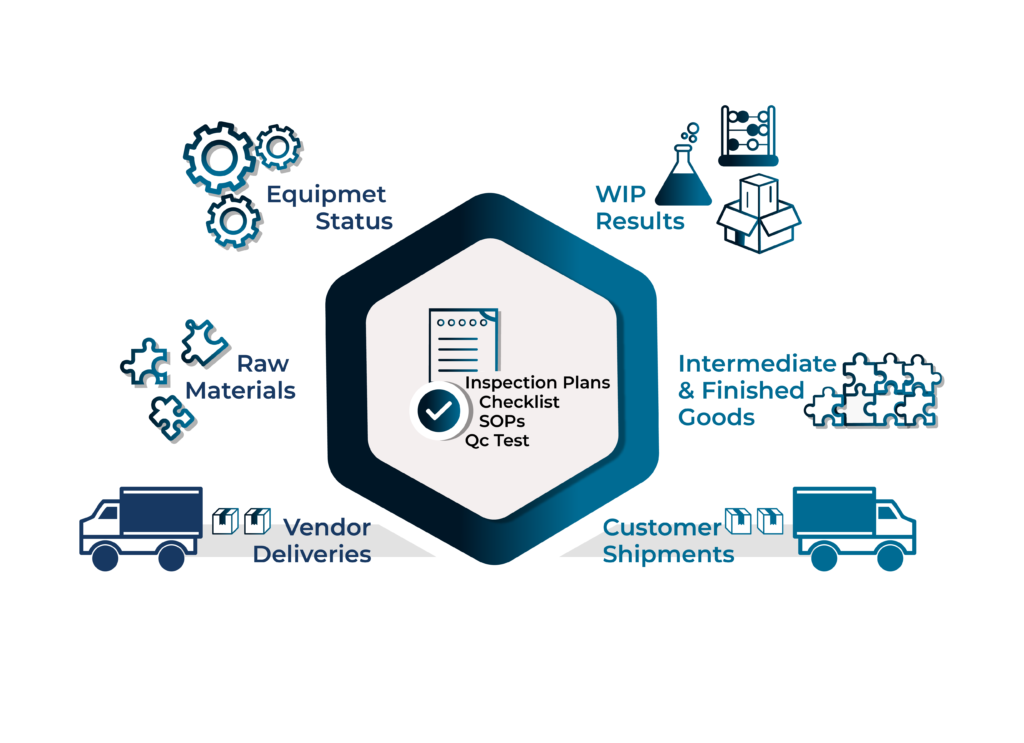
Distributing your Custom Product to Customers
Getting your finished product to your facility isn’t the end of its journey. Once your perfected item has been received locally, you will want to consider:
- Warehousing: Where will you securely store your product before it gets to your consumers?
- Inventory Management: How will you keep a sellable inventory stock for your new product on-demand for orders, and enable additional production runs to keep inventory available?
- Order Fulfillment: Will you fulfill orders using in-house capabilities or outsource to a third-party logistics (3PL) provider to handle these operations?
- Packaging & Shipping: Do you need customized packaging or other unique kitting or wrapping operations?
Working with Nautical for your Product Development Needs
Our team of experts worldwide will help bring all of your custom product ideas to reality. Nautical works directly with its partner companies to define product specs, design 3D models, provide samples, and deliver the product right to your door. We also provide on-site quality control inspections for every product at all our facilities to ensure no production issues arise.
In addition to all our custom product development capabilities, we provide all the additional 3PL and fulfillment services that your company may need. Our team of industry experts will ensure your product is safely stored and shipped. Working with Nautical eliminates the need to work with multiple different partners and keeps all operations under one roof.
